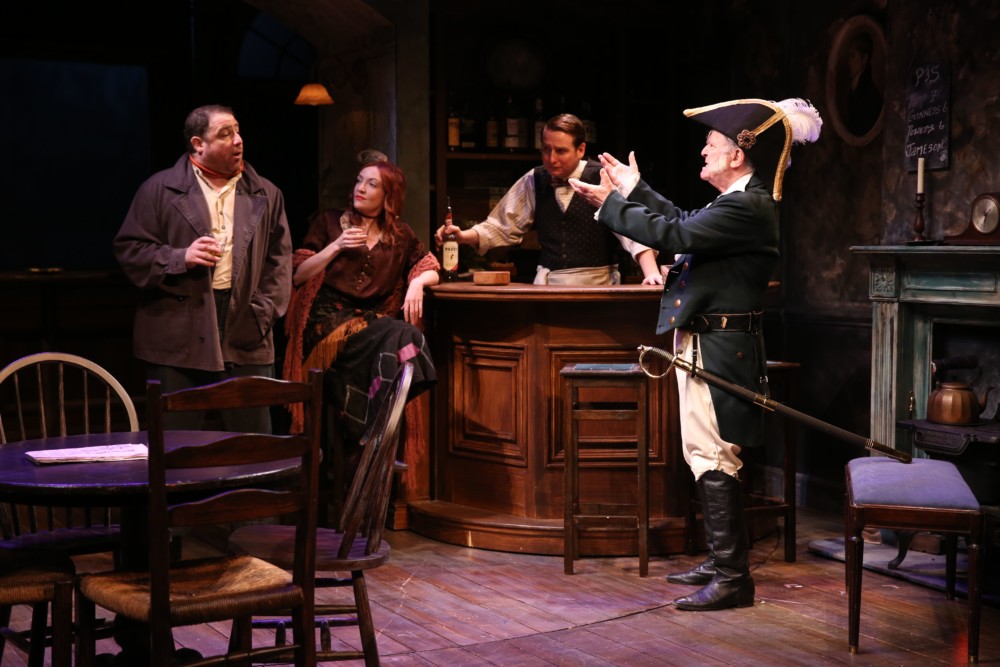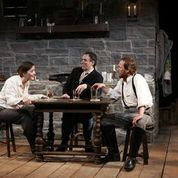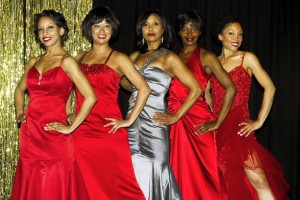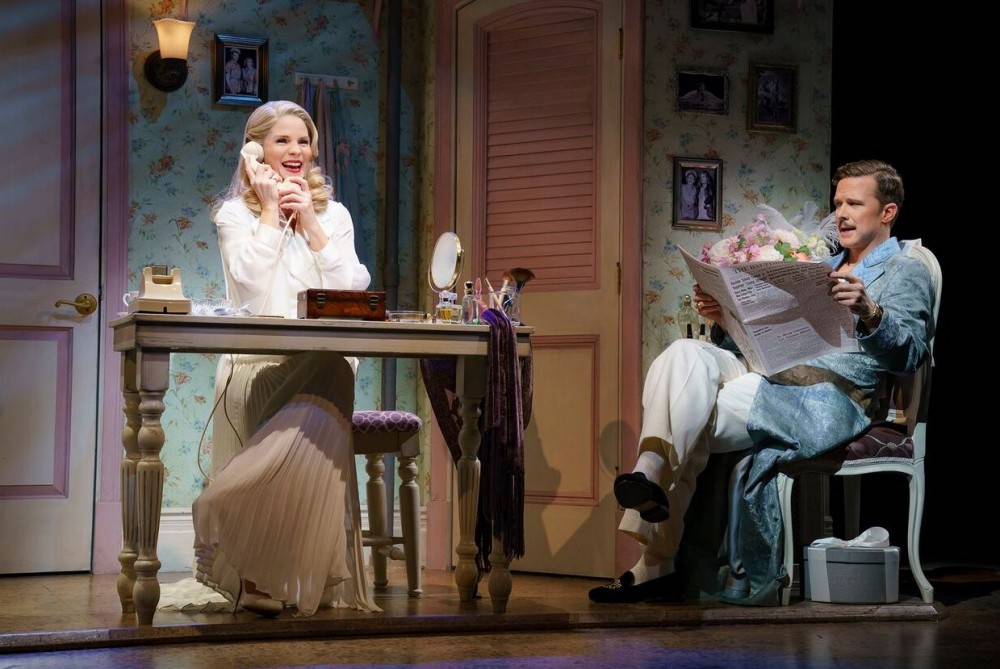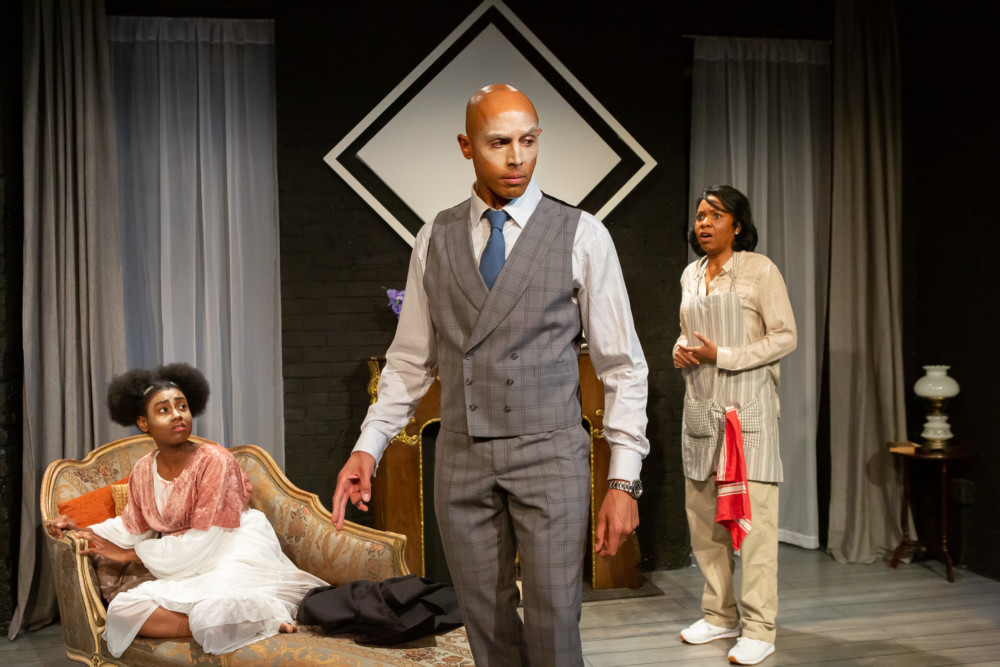Review By Marilyn Lester
Tweed caps off to the Irish Repertory Theatre for a stunning production of The Plough and the Stars, the last of Sean O’Casey’s Dublin trilogy. With The Shadow of a Gunman and Juno and the Paycock, O’Casey’s historical works have been brilliantly mounted (nearly a century on) to provide relevance for modern audiences. Under the economical and incisive direction of Charlotte Moore, The Plough and the Stars––the most complex of the three works––is a triumph of staging and ensemble acting by a crackerjack cast.
Though not an anti-war play per se, this immersive production makes it so. The full use of the theater space drops the audience in the middle of the action with a “you are there” intensity. Caught in the crossfire of emotion during the last act it’s impossible not to be thrilled and horrified at the same time. This harrowing experience is the payoff of Moore’s tight, unsparing direction, aided by keen lighting (Michael Gottlieb) and extraordinary sound design (Ryan Rumery & M. Florian Staab).
When The Plough and the Stars debuted in 1926, it was a scant ten years after the Easter Rising, the focus of the play. Riots ensued outside the theater. During the declaration of independence made that day in 1916 against 400-plus years of English occupation, not all Irish people supported it. The rebellion was suppressed and the leaders executed. With a fractious renewed rebellion, followed by civil war, the national psyche was still raw. O’Casey’s unsparing observations, from the viewpoint of the poor underclass, rankled.
There’s a wealth of Irish history encoded in The Plough and the Stars. The title itself refers to the flag of the militia group, the Irish Citizen Army (ICA), which was, with the newly adopted tricolor flag, raised over Dublin’s General Post Office during the Rising. Historical context adds much to experiencing the play but it’s universal enough without it and without the immediacy of national affairs that Irish audiences felt. This focused cast of Irish Rep actors expertly humanizes it, fleshing out what might be considered stock characters with depth and sensitivity, lest they be reduced to soap opera burlesque. This is a tough play of contrasts, contradictions and paradoxes, through which each actor must tread.
Fluther Good, for instance, a trade unionist and carpenter, played trenchantly by the wondrous Michael Mellamphy, sorts out both the drivel and sagacity of his character with equal grace and weight––no easy task. The play opens on what appears to be conventional domesticity. The gossipy charwoman, Mrs. Gogan (Úna Clancy) banters with Fluther. The Marxist, “The Young Covey” (James Russell) unrelentingly goads his uncle, Peter Flynn (Robert Langdon Lloyd) an elder member of the Irish Citizen Army. This depiction contrasts the new opposed to the old as well as the means to the ends of economic and political change and advancement.
As the other characters are introduced, so are more opposites. Bessie Burgess (a terrifyingly superb Maryann Plunkett), a Protestant Cassandra and Greek chorus among the Catholics, has already lost a son and warns of the chaos ahead. The young wife (and a strong statement for female sexuality), Nora Clitheroe (Clare O’Malley) prizes love and family above the State. Her husband, Jack Clitheroe (Adam Petherbridge) chooses love of country foremost, a declaration that will bring calamity to both of them. During the second scene, in a pub, against the foreground of the Irish love of debate among various of the characters, is set the exhortations of a rebel rouser seen through the pub window. His narrative is comprised of actual quotes from the historical rebel leader and national hero, Pádraig (Patrick) Pearse, addressing the question of enslavement versus the right to be free.
By play’s end, on the day of the Rising, when all hell breaks loose, it’s the realty of our humanness that rises to the top. Just as the constellation of the Plough, depicted on the flag, contains the guiding North Star, so is each character called upon to be guided by a personal moral compass. Bessie gives her life to save Nora. Fluther risks his to arrange a funeral for Mrs. Cogan’s daughter, Mollser (Meg Hennessy) who has just died of consumption. When two Tommies (British soldiers) arrive to clear out the tenement, one declares they are only “doing their duty.” At the last, these two, alone in the flat, pause for a cup of tea, that magic medicinal common to both the Irish and English. From the street arises singing, for all those who suffer the loss of peace to warfare, the haunting refrain of “Keep the Home-Fires Burning (‘Til the Boys Come Home).”
The remainder of the inspired cast is: Terry Donnelly (The Woman from Rathmines). Rory Duffy (Ensemble), John Keating (Capt. Brennan), Ed Malone (Lieut. Langon), Harry Smith (Bartender/ Sgt. Tinley) and Sarah Street (Rosie Redmond). The clever, evocative set is by Charlie Corcoran with Costumes by: Linda Fisher & David Toser.
The Plough and the Stars plays through June 22at the Irish Repertory Theatre, 132 West 22nd Street, NYC. For further information and tickets call 212-727-2737 or visit www.irishrep.org


